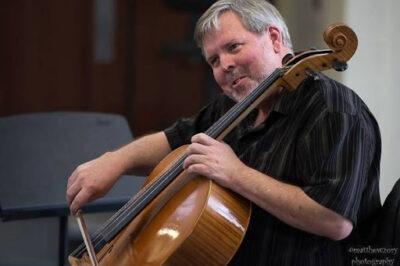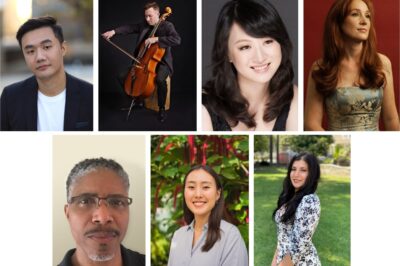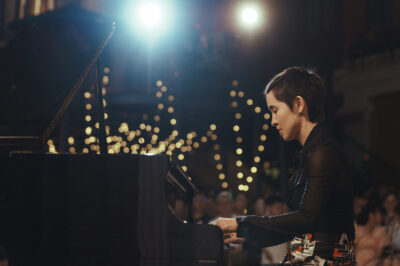Remembering Crumb | Nic Gerpe

Dr. Nic Gerpe has been on the Piano Faculty of the Pasadena Conservatory of Music since 2006. He is currently working on a project that celebrates the 50th Anniversary of George Crumb’s Makrokosmos, Volume I, entitled Makrokosmos 50.
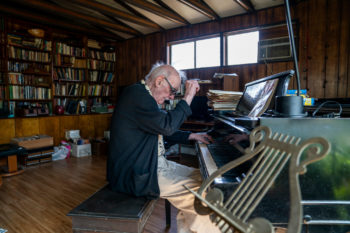
By now, I’m sure that you have heard the incredibly sad news that the great composer George Crumb passed away on Sunday, February 6, at the age of 92. Over the past week I’ve been reflecting a lot on what his music means to me, and just how big an influence it’s had on my artistic life.
I never had the privilege of meeting Crumb in person. My first exposure to his music was when my teacher at USC, Professor Bernadene Blaha, assigned me “A Little Suite for Christmas, A.D. 1979”. I’d already known that I wanted to pursue contemporary music, but this piece was an absolute revelation to me. Crumb’s seamless, organic integration of traditional piano playing with his incredibly imaginative and colorful extended piano techniques redefined for me what is possible with sound and expression. The music itself was so captivating, so beautiful, and so haunting, and the depth of its expression and spiritual connections – Crumb called music a “system of proportions in the service of the spiritual impulse” – astounded me. Simply put, I was hooked.
I played a lot more of his music in subsequent years – Vox Balaenae, for flute, cello and piano; the Four Nocturnes for violin and piano, and Makrokosmos III “Music for a Summer Evening” for two pianos and percussion. Every one of these pieces was a complete joy to work on, and with each piece I was still completely blown away by this mystical and coloristic sound world.
Over the years I’d spoken to many friends, acquaintances and colleagues who had had interactions with Crumb. As well, I’d watched and read several interviews with him. So many of my friends have at least one Crumb story.One of the things that I admire most about him is his humility and his humanity. It constantly amazes me how his music moves people from all walks of life, and such different backgrounds and experiences.
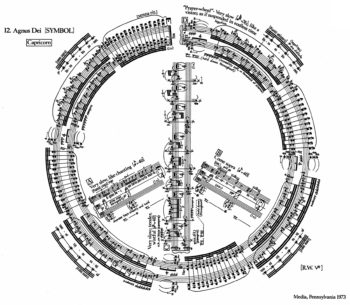
The other day, I found this interview with him from 2019, on the occasion of his 90th birthday – it is a wonderful insight into his personality and compositional process (and if you’ve ever wondered just how he created those stunning graphic scores…)
My favorite piece of his, and quite possibly my favorite piece of all time, is Makrokosmos, Volume I. I had the great privilege of studying this work with Dr. Stewart Gordon. Dr. Gordon is a consummate master of this piece, and he studied it with David Burge – the pianist that the piece was written for. Everything about the work – the elegance and beauty of its construction, the gorgeousness of its sound, the breadth and depth of expression – make it truly timeless. I’m constantly inspired by his invocation of the Rilke poem – “And in the nights the heavy earth is falling from all the stars down into loneliness. We are all falling. And yet there is One who holds this falling endlessly, gently in his hands.” But my favorite aspect of the piece is how Crumb celebrates those who influenced and shaped him. The work is dedicated to one of his favorite composers, Bela Bartok, and he cites the influence of Debussy, Chopin, and Schumann. Crumb dedicates each of the twelve movements of the piece to a friend, colleague, or musical influence, indicated by their initials at the end of each short movement. To me, in addition to all its wonderful mystical, cosmological, and universal elements, the piece is a celebration of connections between people – those who shape our lives and make us who we are.

